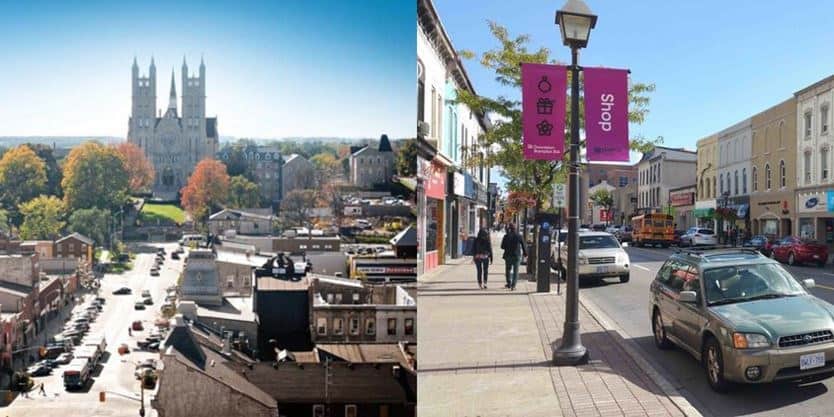Brampton Politician Continues Building Momentum in NDP Leadership Race
Published August 6, 2017 at 3:00 am

Jagmeet Singh, the Brampton MPP and the former deputy leader of the Ontario NDP, has been making waves and building momentum ever since he entered the race to become the next leader of the federal
Jagmeet Singh, the Brampton MPP and the former deputy leader of the Ontario NDP, has been making waves and building momentum ever since he entered the race to become the next leader of the federal NDP early this year, not to mention also posting some impressive fundraising numbers as of late.
According to these recently released fundraising numbers, Singh raised $356,784 from around 1,700 individual contributions, despite entering the race around mid-May which is halfway through the reporting period that stretched from April 1 to June 30. That represents 60 per cent of all money raised by the four candidates for the NDP leadership in this quarter.
Singh was followed by Ontario MP Charlie Angus, who raised $123,577 from 1,285 individual contributions. Manitoba MP Niki Ashton raised $70,156 from 1,006 contributors (though she announced that her campaign had already raised $100,000 in July), while Quebec MP Guy Caron raised just $46,970 from 568 contributions.
There was another more interesting comparison Singh’s campaign brought up: he apparently raised more money than either Prime Minister and Liberal Leader Justin Trudeau or newly minted Conservative leader Andrew Scheer in the same time period (47 days) when those two were running to be the leaders of their respective political parties. Trudeau only raised $82,105 in 2013 and Scheer only raised $176,112 in early 2017 before the conclusion of the federal Conservative leadership race.
But money is only one factor when it comes to deciphering whether a political candidate is building the momentum he or she needs to win something like the leadership of their political party; for Jagmeet Singh it seems to be a bit of a mixed bag at the moment. British Columbia appears to be where Singh is making a big push for support. He spent a lot of time in BC recently campaign for his provincial cousins, and it was successful as the NDP managed to oust the governing BC Liberals after a few tense weeks. As for Quebec, where the NDP saw an incredible surge of support in the 2011 election and where it still retains 16 sitting MPs, that province is offering a bit of a conundrum for a candidate campaigning to be the first ever visible minority political party leader in Canada.
Singh’s depth of British Columbia support can be seen in the list of endorsements he has received so far. Four out of the five sitting federal MPs supporting him are from BC, as well as eight of 12 sitting provincial NDP MLAs (five of whom are cabinet ministers in the new BC government). Singh’s campaign also claimed to be signing up thousands upon thousands of new memberships from the province, which would be crucial in the actual leadership voting process come this fall.
Another factor is that British Columbia has one of the largest Indo Canadian communities outside of Ontario. Surrey, BC is essentially the West Coast equivalent of Brampton. No doubt that leg up in BC has something to do with some of Singh’s fellow Sikhs and Indo-Canadians wanting to see one of their own potentially become a future prime minister.
The same cannot be said for Quebec. Singh can count on one sitting Quebec MP’s endorsement as well as support from a second former Quebec MP, the one that has the most Quebec caucus members’ support is Guy Caron, with just two. The rest of the NDP Quebec caucus have not publicly endorsed anyone yet as of this writing, but Singh’s problems in Quebec go beyond fundraising or endorsements and more to do with the socio-cultural aspects of the province, especially when it comes to what is known in the province as “reasonable accommodation.”
Since the Quiet Revolution of the 1960s, Quebec has transformed from a very conservative, Catholic culture into a modern, secular society that almost shuns religion, especially in the public square. Examples of this is the display of religious symbols in public, a town banning self described immigrant practices despite having no immigrants, and the tragic shooting of the mosque in Quebec City that once again sparked the debate over such symbols.
There are very devout people who hold their faith very seriously and wear it on their sleeve. In Jagmeet Singh’s case, he literally wears his Sikhism on his head, and carries the ceremonial dagger of the Sikh religion known as the Kirpan underneath his clothes. Just the very sight of him, at least for some in Quebec, might arise suspicion about religion mixing in with the public square and politics, in a way that seems completely alien to people in Brampton. In Brampton, every other person in Canada’s ninth largest city looks like Singh and no one would see anything being out of place. But apparently in Quebec, multiculturalism has not taken as strong a hold as in the rest of Canada.
Even a former Quebec NDP MP told Le Devoir, one of Quebec’s most prominent newspapers, that Quebecers “are not ready” for a candidate who wears “ostentatious signs” connected to their religion. The challenge for Singh here is to get beyond the surface of who he is as a Sikh Canadian and to connect to Quebecers on shared progressive values that he is banking his campaign on.
Perhaps only be closing that gap could we potentially see a major political party leader hail from Brampton.
Follow me on Twitter @thekantastic
insauga's Editorial Standards and Policies advertising





